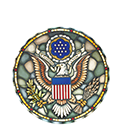The Judge
The judge presides over the trial from a desk, called a bench, on an elevated platform. The judge has five basic tasks. The first is simply to preside over the proceedings and see that order is maintained. The second is to determine whether any of the evidence that the parties want to use is illegal or improper. Third, before the jury begins its deliberations about the facts in the case, the judge gives the jury instructions about the law that applies to the case and the standards it must use in deciding the case. Fourth, in bench trials, the judge must also determine the facts and decide the case. The fifth is to sentence convicted criminal defendants.
The Lawyers
The lawyers for each party will either be sitting at the counsel tables facing the bench or be speaking to the judge, a witness, or the jury. Each lawyer's task is to bring out the facts that put his or her client's case in the most favorable light, but do so using approved legal procedures. In criminal cases, one of the lawyers works for the executive branch of the government, which is the branch that prosecutes cases on behalf of society. In federal criminal cases, that lawyer is the U.S. Attorney or an assistant U.S. attorney. On relatively rare occasions, defendants in criminal cases or parties in civil cases attempt to present their cases themselves, without using a lawyer. Parties who act on their own behalf are said to act pro se, a Latin phrase meaning "on one's own behalf."
The Parties
The parties may or may not be present at the counsel tables with their lawyers. Defendants in criminal cases have a constitutional right to be present. Parties in civil cases may be present if they wish, but are often absent.
The Witnesses
Witnesses give testimony about the facts in the case that are in dispute. During their testimony, they sit on the witness stand, facing the courtroom. Because the witnesses are asked to testify by one party or the other, they are often referred to as plaintiff's witnesses, government's witnesses, or defense witnesses.
The Courtroom Deputy
The courtroom deputy, who is usually seated near the judge, administers the oaths to the witnesses, marks the exhibits, and generally helps the judge keep the trial running smoothly.
The Court Reporter
The court reporter sits near the witness stand and usually types the official record of the trial (everything that is said or introduced into evidence) on a stenographic machine. Federal law requires that a word-for-word record be made of every trial. The court reporter also produces a written transcript of the proceedings if either party appeals the case or requests a transcript to review. However, transcripts will not be available to jurors because there is not enough time to create a transcription.
